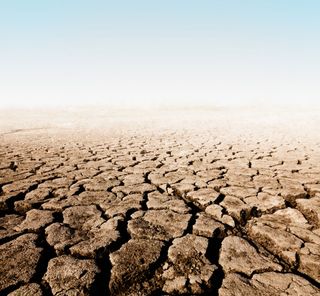7 Surprising Health Effects of Drought

With more than half the U.S. currently in drought, concerns have mounted over the consequences of the arid climate on the country's crop yields. But droughts have far reaching effects beyond the farm, including many effects on human health, according to the Centers for Disease Control and Prevention (CDC).
Here are seven potential health concerns that occur with drought:
Bad air
Droughts can reduce air quality and compromise the health of people with certain conditions, according to the CDC. During a drought, dry soils and wildfires increase the amount of airborne particles, such as pollen and smoke.
These particles can irritate the airways and worsen chronic respiratory illnesses, such as asthma, the CDC says. Poor air quality can also increase the risk of respiratory infections, such as bacterial pneumonia.
Valley fever
Drought increases the risk of people catching the fungal infection coccidioidomycosis, or valley fever, the CDC says. The disease is transmitted when spores in the soil become airborne and are inhaled. The condition causes a range of symptoms, including fever, chest pain, coughing, rash, and muscle aches, the CDC says.
Sign up for the Live Science daily newsletter now
Get the world’s most fascinating discoveries delivered straight to your inbox.
The condition is more common among people living in the Southwest than other parts of the U.S., but it is relatively rare — one study reported that 0.04 percent of people in Maricopa County, Ariz., were infected in one year.
Germy hands
In a drought, people may feel the need to reduce hand washing and other hygiene practices to conserve water, the CDC says. This may increase the spread of infectious diseases, such as acute respiratory and gastrointestinal illnesses.
"Conservation efforts should not hinder proper sanitation and hygiene," the CDC says. People can install low-flow faucet aerators to reduce water use while still maintaining proper hygiene, the agency says.
Mental health effects
Those whose livelihood is directly tied to the water supply — including farmers, horticulturalists and nursery owners — may suffer adverse mental health effects during a drought, according to the CDC.
"Financial-related stress and worry can cause depression, anxiety, and a host of other mental and behavioral health conditions," the CDC says. Studies have found an increased rate of suicide among people living in farming areas during droughts, the agency says.
Unhealthy eating
Reduced rainfall can limit the growing season for farmers, and further reduce crop yields by creating ideal conditions for insect infestations that damage crops. This can bring increases in food prices, or shortages of certain foods, potentially leading to malnutrition, the CDC says.
In a drought, farmers may also use recycled water to irrigate fields. Although the use of recycled water for agriculture is legal in the United States, if the process is not properly monitored, crops can become contaminated with pathogens such as salmonella and E. coli, the CDC says.
Mosquito-borne diseases
Increases in diseases transmitted by insects, such as West Nile virus, which is spread by mosquitoes, are linked with drought, the CDC says. Drought can shrink bodies of water, and cause water to become stagnant, providing breeding grounds for mosquitoes, the CDC says.
Droughts can also change the behavior of mosquitoes and allow for out-of-the-ordinary meetings between certain types of mosquitoes and birds. This may create outbreaks of diseases such as St. Louis encephalitis, the CDC says.
Recreational injuries
Lower water levels may also mean an increase in injuries for those who hoping to grab some summer fun in lakes. Lower water levels are often difficult to perceive, and people may injury themselves by diving into shallow waters or striking objects while boating, the CDC says.
Pass it on: Droughts have many consequences for health.
This story was provided by MyHealthNewsDaily, a sister site to LiveScience. Follow MyHealthNewsDaily on Twitter @MyHealth_MHND. We're also on Facebook & Google+.
Most Popular



